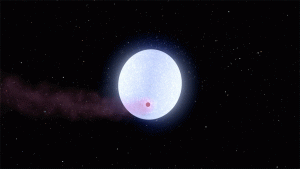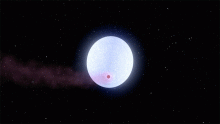Super Heated [1]
Vega, one of the brightest stars in the night sky, may be orbited by one of the hottest planets. The planet hasn’t been confirmed. But in early observations, it appears to be about 20 times the mass of Earth. And it’s so close to Vega that daytime temperatures soar to 5400 degrees Fahrenheit. That easily puts it on the list of hottest known exoplanets.
Astronomers have discovered hundreds of super-heated planets. The heat can melt the planet’s surface and create fearsome winds and hellish rains.
On HD 189733b, for example, the thermostat is cranked up to 1700 degrees. That appears to create winds between the dayside and the cooler nightside of about 9,000 miles per hour. It may also form clouds that rain beads of molten glass.
And WASP-76b, with peak temperatures of 4,000 degrees, could see rains of molten iron, with winds howling at 50,000 miles per hour.
The hottest planet yet seen is KELT-9b. It’s near the middle of Cygnus, the swan, which is low in the northeast at nightfall, to the lower left of brighter Vega.
KELT-9b is bigger and heavier than Jupiter, the giant of our own solar system. It orbits a Sun-like star at just one-tenth of the distance from the Sun to its closest planet. So KELT-9b may top out at 7800 degrees — hotter than most stars. The planet’s atmosphere may be boiling off into space, forming a “tail” of super-hot gas behind a super-hot planet.
Script by Damond Benningfield
Keywords:
- Cygnus, the Swan [4]
- Exoplanet [5]
- Vega [6]


